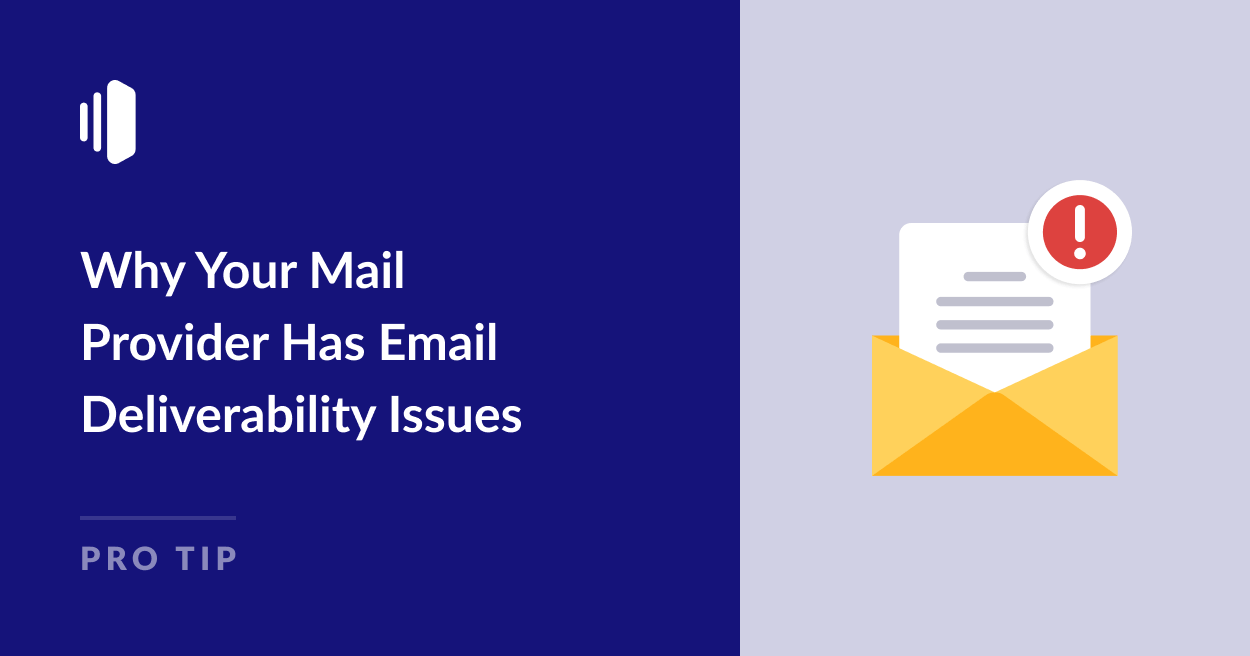Sending an email seems pretty easy.You write a message, hit send, and expect it to pop up in someone’s inbox. But there’s a lot more going on behind the scenes than you might think.
This is especially true for those important automated transactional emails like order confirmations, password resets, and account notifications. Users expect to receive these messages instantly but there can be many barriers and delays along the way, and sometimes they don’t even make it out the door. The worst part? You might not even know there’s a problem.
Many small business owners opt for the convenient budget option for their website email – a free service like Gmail or an email service bundled with web hosting. It’s cheap and easy, sure, but it’s not always the best choice for your business.
These mail providers often have issues from rate limits to reputation problems. And these issues can affect your critical transactional emails. In this article, I’ll investigate why your emails might not be reaching their destination and what you can do about it.
1. Poor IP Reputation Managment
Ever wonder why some of your emails end up in the spam folder, even when you’re not sending anything spammy? The culprit might be your mail provider’s IP reputation – or lack thereof.
Many free or bundled email services don’t put much effort into managing their IP reputation. They might be sending emails from IPs that have been used to send spam in the past, or they might not be quick to address issues when they arise. This can lead to your perfectly legitimate emails being flagged as spam, simply because they’re coming from a “bad neighborhood.”
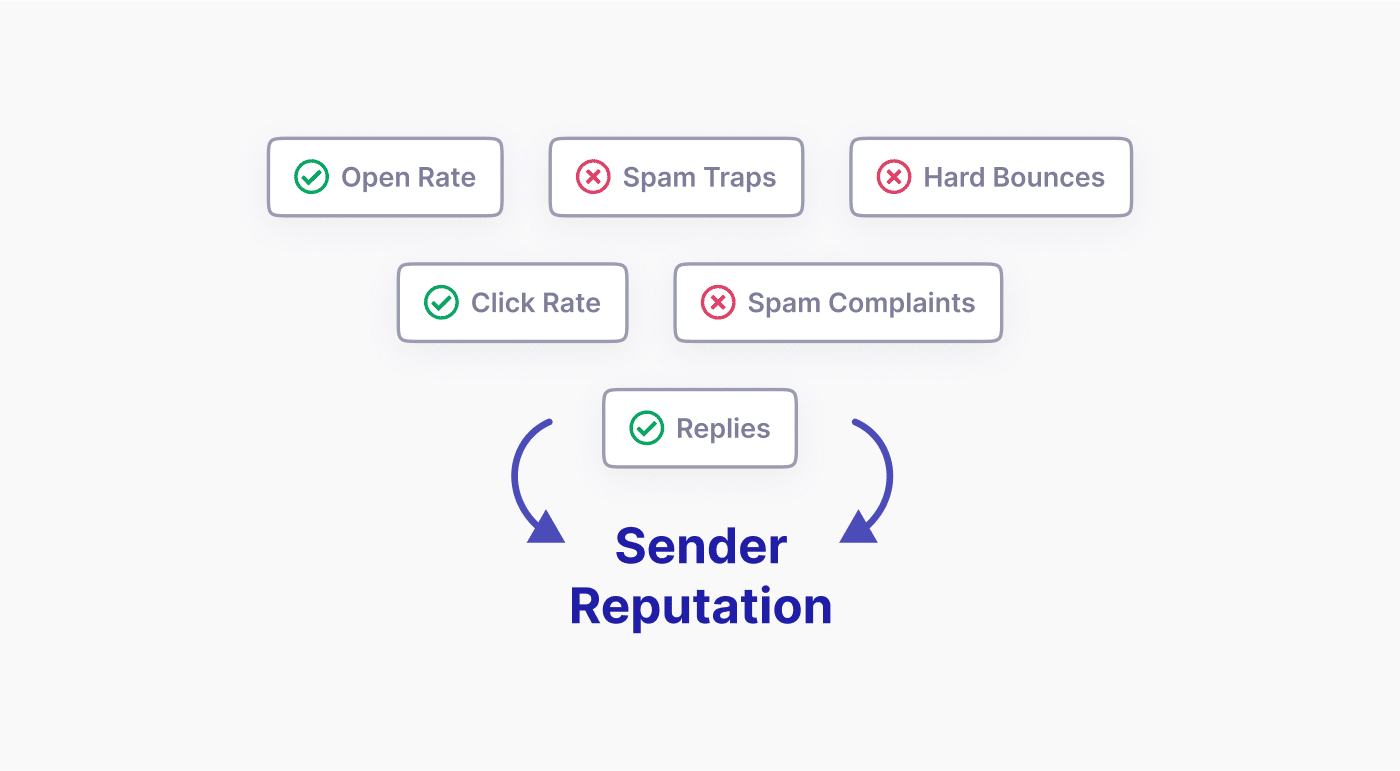
For example, let’s say your web host’s email service shares IPs with hundreds of other businesses. If just a few of those businesses start sending spam (intentionally or not), it could tank the reputation of those IPs – and suddenly, your important order confirmations are landing in spam folders instead of inboxes.
Reputable email services, on the other hand, take IP reputation seriously. They carefully monitor the reputation of their IPs, quickly address any issues that arise, and may even provide dedicated IPs for high-volume senders. This proactive approach helps ensure that your emails have the best chance of reaching their intended recipients.
2. Inadequate Spam Monitoring
Monitoring email traffic for spam and abuse is crucial for any email service provider. Unfortunately, many don’t do it well – if at all.
Keeping an eye out for spammy emails isn’t just about protecting users. It’s also about protecting your reputation as a sender and ensuring your legitimate emails actually reach their destination.
When a mail provider fails to monitor and prevent abuse, spammers can quickly damage the reputation of shared sending IPs, affecting deliverability for anyone sending email from the same IP.
Without proper monitoring, shared IPs can easily end up on major blacklists due to failing to prevent spam from the network. The result? Countless legitimate emails are also blocked, causing major headaches for businesses relying on the service.
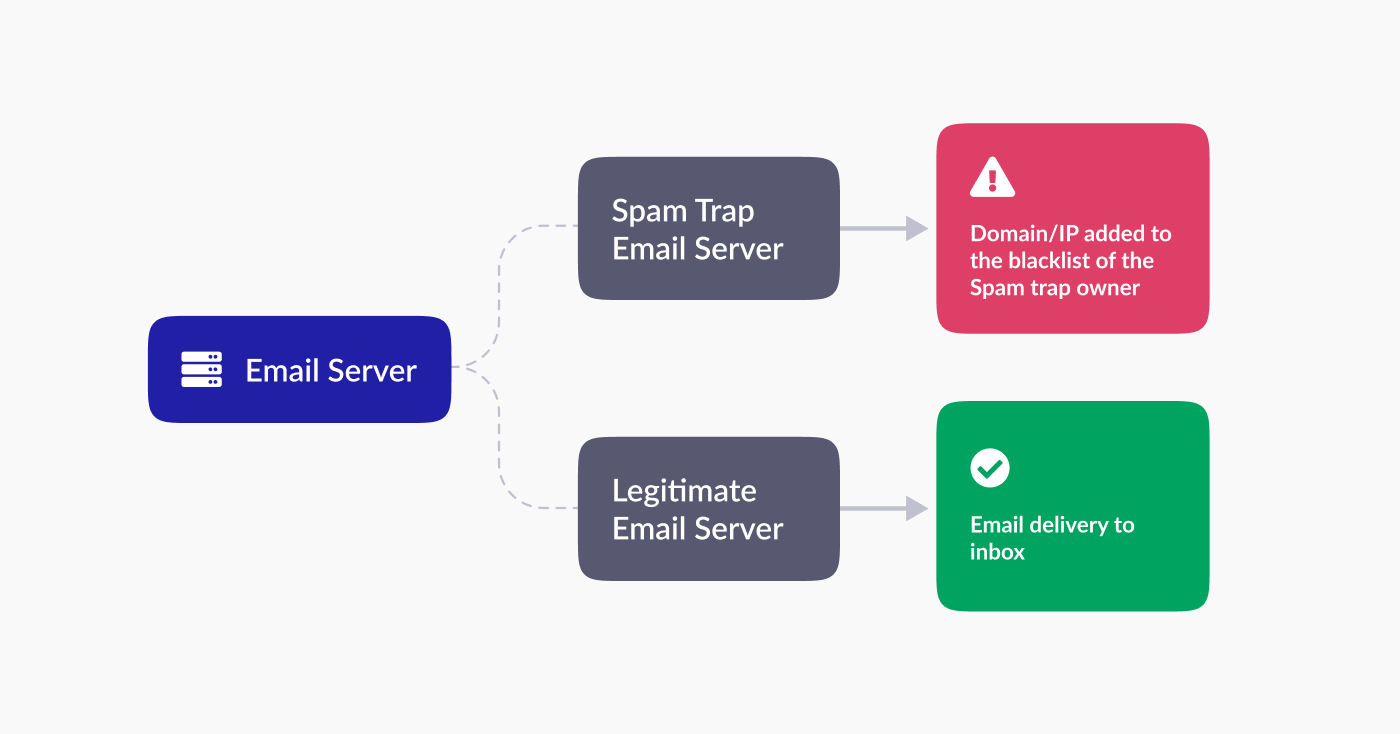
At SendLayer, for example, we take a proactive approach to monitoring spam complaints and potential abuse.
We don’t approve just anyone for a SendLayer account. If your domain is new and hasn’t had time to build up a reputation, we’ll manually review it to make sure your business is legitimate and doesn’t fall into a high-risk category for spam complaints.
We also automatically block accounts when they reach a certain ratio of spam complaints. This isn’t a complete ban and the block will be lifted as soon as the issue is resolved. But it’s crucial for us to protect all our users and ensure the reputation of our sending IPs remains squeaky clean.
3. Mixing Transactional and Marketing Emails
Imagine if your important work calls and telemarketing calls came from the same phone number. Chances are, people would start ignoring all your calls. That’s essentially what happens when transactional and marketing emails share the same IP addresses.
Transactional emails are the “need-to-know” messages. Order confirmations, password resets, shipping notifications – these are emails your customers expect and often need to receive. They’re typically triggered by a specific action and contain important information.
Marketing emails, on the other hand, are not so essential. Newsletters, promotions, product updates – these are messages you want your customers to see, but they’re not usually time-sensitive or critical.
| | Marketing/Bulk Email | Transactional Email |
|---|---|---|
| Purpose | Marketing, promotions | Account updates, notifications |
| Recipients | Large audience | Individual recipients |
| Content | Product offers, campaigns | Order confirmations, purchase receipts |
| Timing | Scheduled campaigns | Triggered by specific actions |
| Frequency | Varied, frequent | Based on user interactions |
| Design | Branding and visuals emphasized | Simple, information-focused |
| Personalization | Segmentation and customization | Personalized user data |
| Permission | Users must opt-in | No opt-in needed |
| Examples | Weekly newsletter | Password reset email |
Using the same email service to send both types of emails is convenient but risky.
Why? Because marketing emails are more likely to be marked as spam. They’re sent in bulk, often contain promotional language, and not everyone wants to receive them. If your marketing emails start getting poor engagement or spam complaints, it can drag down the reputation of the IP address they’re sent from.
Instead, a safer option is to use a dedicated transactional email service like SendLayer. This ensures that your transactional emails maintain high deliverability and always hit the inbox so those crucial messages aren’t missed.
Additionally, SendLayer creates an email subdomain when you set up an account. This allows you to protect the reputation of your primary domain and keep your domain for sending transactional emails separate from subdomains for other purposes.
4. Weak Authentication Practices
One of the biggest challenges with using free mail providers for transactional emails is their lack of control over email authentication.
Email authentication relies on three key protocols working together: SPF, DMARC, and DKIM. Without proper authentication, mail providers have a harder time verifying the legitimacy of your emails This can lead to:
- Increased Spam Filtering: Emails might be flagged as suspicious and filtered into spam folders, even if they’re legitimate transactional messages.
- Spoofing Risk: Malicious actors can spoof your email address, sending fake emails that damage your reputation and confuse your customers.
- Delivery Delays: Mail providers might delay delivery of unauthenticated emails while they investigate their legitimacy.
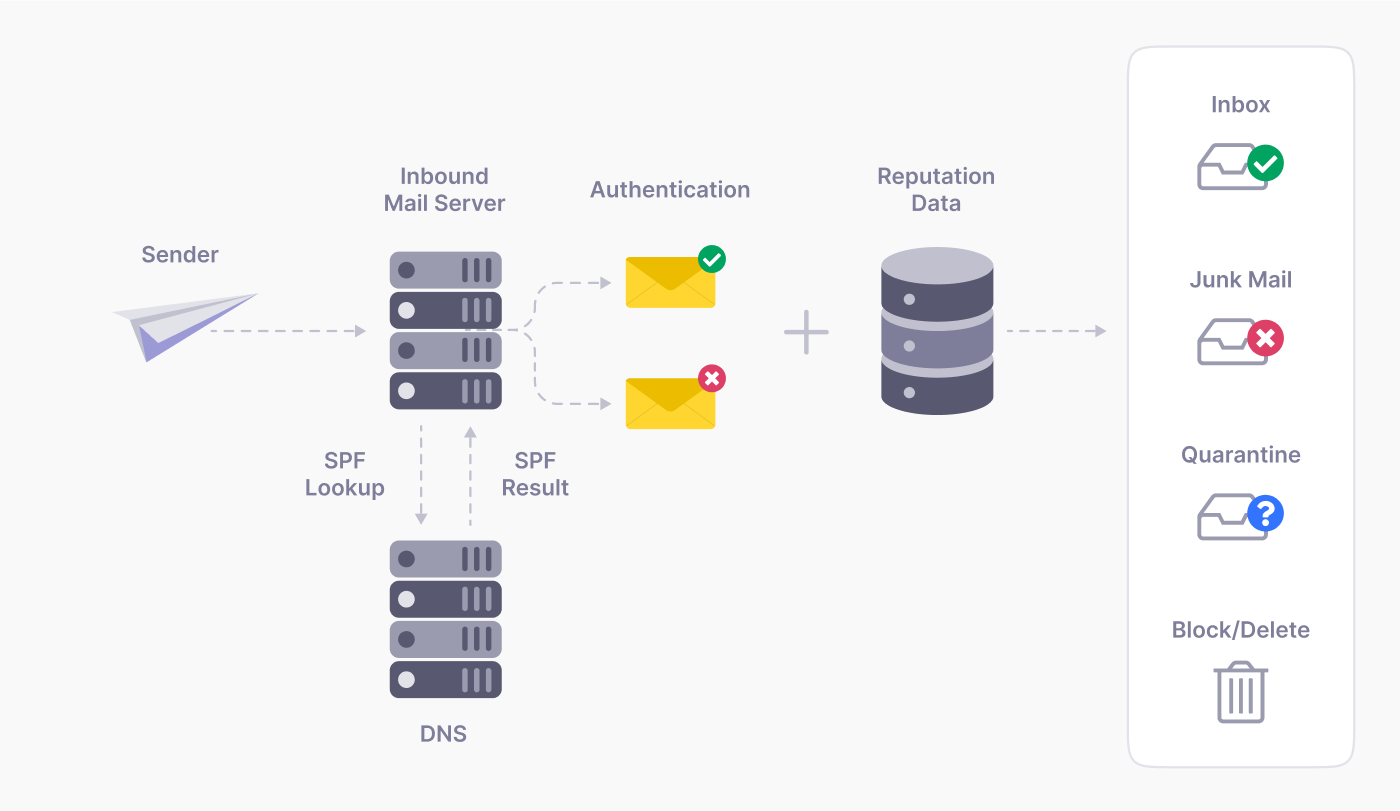
At SendLayer, we take authentication seriously. We guide customers through setting up proper authentication for their domains and won’t send any emails until SPF, DMARK, and DKIM records are set and working properly.
5. Lack of Detailed Analytics
Monitoring key metrics is crucial for maintaining peak transactional email deliverability.
Tracking delivery rates and bounce rates allows you to identify any issues preventing emails from reaching inboxes.
This could include typos in email addresses, inactive accounts, or server-side problems. By promptly addressing these issues, you ensure your messages get where they need to go.
Open rates and click-through rates offer valuable insights for marketing emails, but they can also alert you to potential issues. For example, low open rates for password resets might indicate delivery issues, not lack of interest. Sendlayer displays all this information in detailed email logs, so you can easily monitor your emails and spot any issues.
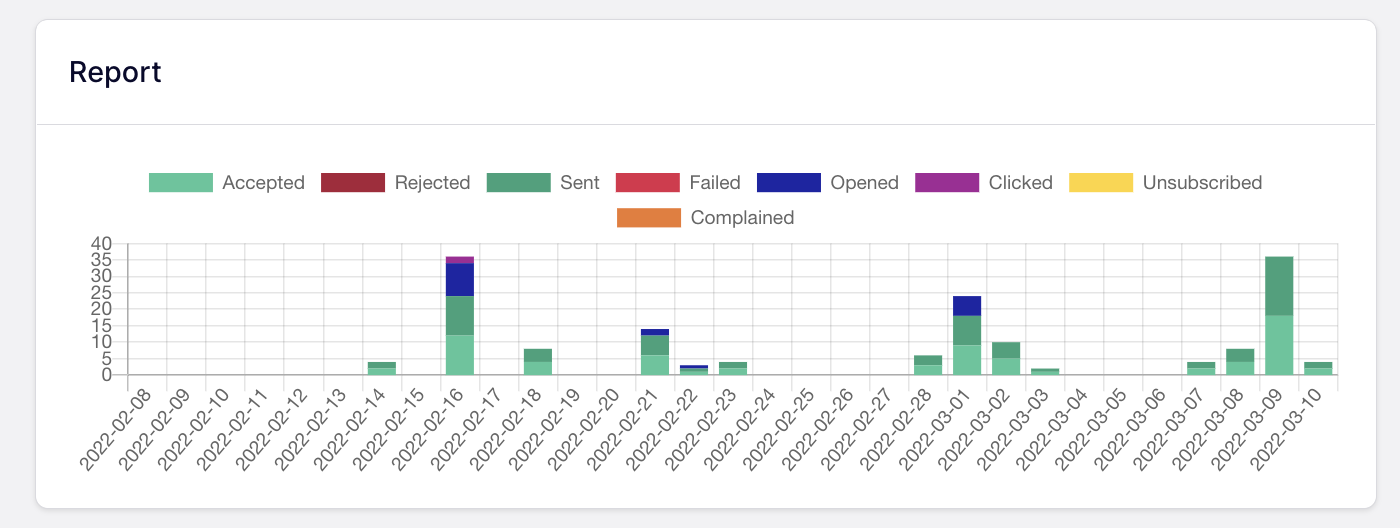
Spam complaints might be one of the most important metrics to keep an eye on if you want your email delivery to remain high, as a high spam complaint rate can be a red flag to email service providers, who may direct your email to the spam folder or block it completely.
Monitoring complaints allows you to identify and address issues before they significantly impact your deliverability.
6. Poor Scalability
Free email providers like Gmail or the basic email with your web hosting are great for starters. They’re convenient and cost-effective. But as your business grows and you send more transactional emails, these services can become a major bottleneck for your success.
Free email services often restrict the number of emails you can send daily. If you hit this limit, you won’t be able to send any more emails until your quota resets.
Even worse, emails sent after the cutoff may not be queued for later sending. Instead, they could disappear without you being any the wiser.
Professional email services like SendLayer allow you to send a higher volume of emails. With SendLayer, you can start off on one of the lower-level accounts (which still have very generous sending limits compared to many services) and then scale up as your needs grow.
In a nutshell, free email services simply aren’t designed for the high volume and specific needs of transactional emails.
7. Insufficient Customer Support
Finally, if you’re experiencing deliverability problems or a high spam complaint rate when you’re using a free email service, you’re on your own.
You’ll have to figure out for yourself why you’re having issues and carry out all the troubleshooting steps yourself.
If you’re not an expert in email deliverability (I’m guessing you’re not) this might be quite a big ask.
Opt for an email service with dedicated technical support, on the other hand, and you’ll have an expert at your fingertips any time you need it.
Does Your Mail Provider Have Delivery Issues?
If any of these mail provider red flags sound familiar to you, it might be time for an upgrade.
SendLayer is a transactional email service designed to help businesses like yours overcome these challenges and ensure critical emails reach inboxes. We offer:
- Managed IP reputatation: Send emails from an IP used only by reputable businesses with a low spam complaint rate.
- Email Subdomain: Protect the reputation of your primary domain and keep your transactional emails separate from marketing messages.
- Advanced analytics: Gain deep insights into your transactional email performance and address any delivery issues quickly.
- Expert customer support: Get dedicated help from our team of deliverability specialists.
Sign up for a free SendLayer trial today and experience the difference a dedicated transactional email service can make!
That’s it! Now you know why your mail provider has email deliverability issues.
Next, would you like to learn how to avoid earning a reputation for spam emails? Check out our guide on how to reduce your spam complaint rate for more information.
